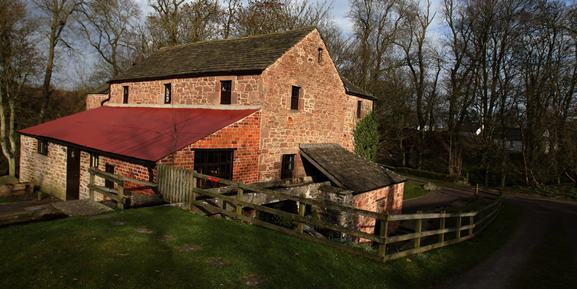The National Trust for Scotland is “not fit for purpose” in its current form and may have to sell some of its properties to survive, an independent report has warned.
Financial difficulties have already forced the NTS to make 45 staff redundant, sell its Edinburgh headquarters and mothball four properties.
Now former Scottish Parliament presiding officer George Reid has said the organisation is top heavy with management and must undergo a radical programme of change because it is “not sustainable” in its current form.
His recommendations include selling some of its portfolio or allowing other groups, such as Historic Scotland, to take over the management of some. This could include buildings that are in ruins, such as Balmerino Abbey in Fife.
Both the NTS and the Scottish Government have welcomed the report and described it as an opportunity to remodel the charity for the 21st century and ensure the survival of much of the country’s heritage.
Mr Reid began a nine-month review of the trust, which has over 310,00 members, last October and published his findings on Monday.
He said the management structure must be streamlined while a full audit of all trust properties and their contents must take place as no single inventory of all of its assets currently exists.
Mr Reid said the charity is under constant financial pressure because only 12 of its 130 properties are fully endowed.
The number of trustees should be cut from 87 to 15 and a new board elected to help push forward with the changes he recommends for the charity.
He also said the trust should consider selling some of its portfolio or allowing other organisations such as Historic Scotland to manage them on its behalf.
“The immediate issue is clear. The trust balances its books by using legacies as ready income, by selling assets and by delaying project work. It has no single record of what it owns.
“It does not know the cost of repairing and maintaining its estate. Its current budget was prepared on a needs-must basis. That is not a sustainable position.”Reserves doubledMr Reid said that staff redundancies and the mothballing of properties last year, plus a cut-back in maintenance work and a good “windfall” of legacies, had helped the charity to more than double its reserves in the past year.
However, he said it had been “gridlocked by its governance structures” and that action must be taken immediately to guarantee its future.
“We need the National Trust for Scotland to tell our country’s story from neolithic to contemporary times,” he said.
“We need a revitalised trust to unfold new chapters in that story. We need it to make Scotland’s heritage accessible, intelligible and accessible, as its founding legislation says for ‘the benefit of the nation.’ ”
The Duke of Buccleuch, president of the National Trust for Scotland, said, “On behalf of the trust, I wish to pay tribute to the extraordinary and tireless dedication shown by George Reid in completing this report within just nine months.
“We face urgent challenges but, thanks to the speed with which he worked, there is now a clear route map for reform to put to NTS members at their AGM in September.
“In spite of limited resources, Mr Reid nevertheless canvassed more people than ever before in a trust review and, through the transparency of the process, has been able to lead many to the conclusions now outlined. We are profoundly grateful to him.”
Scottish Government culture minister Fiona Hyslop said, “I very much welcome the report from George Reid.
“I think it is important that National Trust Scotland use this report as a catalyst for change to improve the organisation so it can best serve the national heritage it is interested in protecting.”
Jane Ryder, chief executive of the Office of the Scottish Charity Regulator, said the review set out a path for the 79-year-old charity to prosper in the 21st century.
She said, “We commend the comprehensive scope of the strategic review, and particularly the recommendations for a streamlined governance structure better suited to this nationally significant charity.
“We are pleased that the final governance recommendations reflect our advice as to how NTS could adopt a modern governance structure fit for the 21st century. We look forward to discussing the detail of any changes with NTS.”
Shadow culture minister Pauline McNeill said, “George Reid’s report has highlighted some very serious problems, but the crucial question is how the National Trust moves forward.
“I want to see the National Trust changing its structures so that it is fit to face the future and the buildings which it looks after on behalf of the public remaining open and accessible for future generations.”
